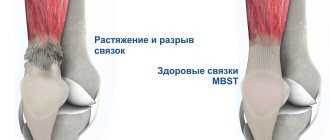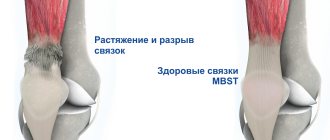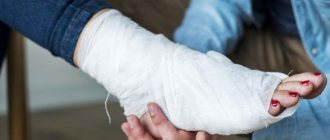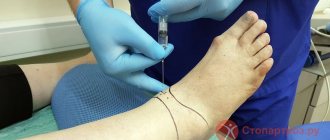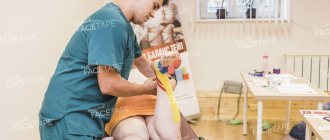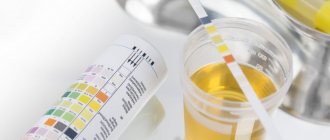The feet and legs can withstand the weight of a person and enormous physical activity. Therefore, for the quality of life and movement without improvised means, it is important to seek help from a rheumatologist or orthopedist in a timely manner. Today it is difficult to say which age is more susceptible to the disease. However, significant rejuvenation of ankle arthritis is a sad reality worldwide. Unlike other types of arthritis that affect women more, the ankle is more common in men. The disease has many faces, because there are many causes of ankle inflammation, and it is by this criterion that the disease is classified. What they have in common is the mechanism of occurrence of ankle arthritis, which depends on many reasons. Inflammation in the joint changes the quality of lubrication in the joint capsule. Because of this, tissue swelling occurs and bones are damaged.
Type of arthritis. Rheumatoid.
Causes and characteristic symptoms. The synovial membrane becomes inflamed, the joints of both legs are equally affected. The body temperature is high, the person is in pain. Rheumatoid nodes appear near the joints.
Type of arthritis. Osteoarthritis.
Causes and characteristic symptoms. It becomes the cause of joint deformation, making itself felt by pain in the evening or as a result of stress. Over time, the foot loses mobility.
Type of arthritis. Gouty.
Causes and characteristic symptoms. Occurs due to salt deposition. Manifested by pain, inflammation, nodules on the joint
Type of arthritis. Reactive.
Causes and characteristic symptoms. Appears after infectious diseases as a reaction of the immune system to their pathogens. Characterized by high fever, poor health, and enlarged lymph nodes.
Type of arthritis. Psoriatic.
Causes and characteristic symptoms. Associated with skin lesions and caused by a hereditary factor.
Type of arthritis. Post-traumatic.
Causes and characteristic symptoms. This type of arthritis is caused by joint injuries, such as ligament tears, sprains, fractures, and dislocations.
Type of arthritis. Purulent.
Causes and characteristic symptoms. Not a very common variety. It occurs when an infection gets into the joint and begins to spread throughout the body. The ankle is the first to suffer and become inflamed.
Arthritis of the lower leg occurs:
- sharp;
- chronic;
- primary;
- one-, two-way, migrating;
- secondary (is a reaction to another disease);
- affects one joint (monoarthritis);
- spreads to several joints (polyarthritis).
According to statistics, rheumatoid arthritis of the ankle joint is the most common among these varieties.
Causes, diagnosis, treatment of ankle arthritis
To make a correct diagnosis that will determine treatment, the patient will have to undergo a series of tests in the laboratory and undergo hardware diagnostics.
Doctors need to determine the person's overall health and look inside the joint. The following activities will be required:
- blood tests;
- radiograph;
- blood for antibodies to a specific infection;
- Ultrasound;
- MRI;
- if necessary, arthroscopy and biopsy.
Inflammation of the foot muscles - tenosynovitis: signs, diagnosis, treatment
An abscess of the inner epidermis of the connective fibers of the foot, which are located on the side of the sole and the back of the foot, is called tenosynovitis of the foot. In medical practice there are two types: primary and secondary. The main one occurs in both amateur and first-class athletes, while the minor one is observed due to the occurrence of sepsis (from suppuration or an infectious disease) or from existing diseases of a rheumatic nature.
Etiology
The main reason for the occurrence of the inflammatory process in its primary form is minor trauma to the connective tissues of the feet, which can occur from excessive stress or as a result of the anatomical features of the body. The first category of tenosynovitis includes people with curvature of the legs, congenital or acquired, dancers, ballet actors, loaders, as well as those involved in skating and skiing.
Aggravated inflammation can occur as a result of contact with an infected area or through blood (purulent arthritis of the foot
, purulent-necrotic process). Tenosynovitis of the foot can develop to chronic if a person has any of the infectious diseases - gonorrhea, influenza, brucellosis or syphilis.
If a person suffers from diseases of a rheumatic nature (ankylosing spondylitis, rheumatoid arthritis
, Fissenger-Leroy syndrome), the duration of tenosynovitis of the foot is determined by the immediate intoxication of the body.
Typology
Based on the causes of tendovaginitis, modern medicine has identified several subtypes:
- non-infectious (professional);
- infectious (standard and non-standard);
- chronic;
- acute and inflammatory;
- pleural and pleural-croupous.
In addition to this classification, the disease is also divided according to the forms of development of inflammatory processes within connective tissues:
- Early or inconspicuous form. It implies primary inflammation of tissues in which there are already small accumulations of blood;
- Exudative form. A large amount of liquid is already collected in the connecting case. A slight swelling at the site of injury is visually detected;
- Long-term aseptic form. The area around the damaged tendons begins to become overgrown with dense connective tissue. Tendons become less mobile.
Signs of tenosynovitis
- Painful sensations with any movement of the foot. Unbearable pain at the site of inflammation of the tendon. If the disease is prolonged and purulent masses are already accumulating in places, the pain will be throbbing.
- Redness of the skin. Dilated vessels at the site of inflammation give this visual picture.
- Local increase in temperature. The site of inflammation is hot due to the large influx of blood in a short period of time.
- The foot is swelling. The vessels stretch, accordingly, become thinner and leak - the fluid comes out into the subcutaneous area. The swelling grows very quickly. Skin injury may occur due to sudden stretching.
- A person cannot fully move his foot.
- With purulent inflammation, intoxication of the whole body occurs, the patient experiences nausea, lethargy, and headache.
- When you press on the damaged area, a soft crunching sound is heard.
There is a possibility of the acute form of inflammation turning into chronic. This means that the person will be tormented by painful sensations and will not be able to walk normally. A superficial examination shows tensile neoplasms; in some cases, small compactions, the so-called “rice bodies,” are palpable. They are often found in tuberculous tendovaginitis.
How to diagnose
If you suspect a disease, you should consult an orthopedic doctor. He can give a referral to a surgeon or rheumatologist.
To make a diagnosis, the doctor needs to perform some manipulations:
- palpate the site of suspected inflammation;
- take a blood draw. If inflammation is present and suppuration has already begun, the analysis will show an increase in ESR and an increase in the number of neutrophils;
- prescribe x-rays and MRIs to determine the presence or absence of pathologies of joints and bones;
- take a sample of inflammatory tissue, as well as a sample of periarticular fluid.
Prescribed treatment for tenosynovitis
If the disease has just manifested itself, the patient is advised to rest. In the acute period, the patient is contraindicated to walk; the limb is fixed with an elastic bandage or splint and is in a suspended state. Immunostimulating and antibacterial drugs are also prescribed.
When the causes of acute inflammation are eliminated, procedures with UV rays, electrophoresis with hydrocortisone, physical therapy, and ultrasound are prescribed.
If acute purulent inflammation is detected, an urgent operation is performed, the tendon is opened, and it is drained. In this case, antibiotics are prescribed to suppress the infectious agent.
If the inflammation began against the background of tuberculosis or syphilis, then the primary task is to get rid of the main infection with the help of anti-tuberculosis drugs (streptomycin, PAS).
In the case of a chronic course of the disease, the same methods are used as indicated above - exercise therapy, massage, electrophoresis with lidase, paraffin.
The patient is also prescribed non-steroidal anti-inflammatory drugs and injections into the affected area. In extreme cases, X-rays are used as therapy. Author: K.M.N., Academician of the Russian Academy of Medical Sciences M.A. Bobyr
How to treat?
Due to the fact that ankle arthritis has similar symptoms to some other joint diseases, it is unlikely that you will be able to make a correct diagnosis yourself. Therefore, you will have to be patient and strong and go to a professional. The rheumatologist prescribes individual complex treatment, consisting of medications and physiotherapeutic procedures. Excellent results are obtained by subsequent physical therapy, carried out under the supervision of a doctor.
You should not take any medications without the advice of a doctor. Many have serious side effects and are not prescribed to everyone. As a rule, conservative treatment begins with pain relief, followed by the use of nonsteroidal anti-inflammatory drugs. If the result is not the best, glucocorticosteroids will be needed. Everything happens exclusively under the supervision of a doctor. If ankle arthritis is caused by an infection, you will have to take a course of antibiotics. To improve immunity, the doctor prescribes vitamin complexes. Among physiotherapeutic procedures, cold therapy, hydromassage, and ultrasound give good results. Surgical methods are used only when drug treatment does not produce results. Today there are and have proven themselves:
- osteotomy, the purpose of which is to evenly distribute the load on both sides of the joint;
- endoprosthetics, that is, replacement of a joint with its artificial analogue;
- arthrodesis, when special screws hold the joint in its normal position, preventing its deformation.
Diet plays an important role in the treatment of ankle arthritis, the symptoms of which are complex and varied. You will have to limit protein foods, but plant foods are welcome. It is very good for joints to eat fatty fish, various jellied meats and jellies. Fish is rich in omega-3 fatty acids, and dishes containing gelatin are rich in collagen, which helps in the restoration of joint tissue. The prognosis depends on the cause of the inflammatory process. However, the disease always occurs with relapses. Reactive arthritis is more treatable, but rheumatoid or psoriatic arthritis is more difficult. They provoke deformation of the joint and lead to its immobility. Therefore, it will take much more effort from the patient and the doctor to delay the development of destructive processes.
We specialize in the treatment of the musculoskeletal system, even in severe stages of disease. We have been helping thousands of patients avoid surgery for 10 years!
Our doctors
This is the strongest team of experts who teach at the RUDN Department. We are the clinical base of leading universities, where the best doctors in Moscow, unique specialists from Russia and abroad are trained.
Causes and course of the disease
In the initial stage, the disease is accompanied by pain when walking and putting stress on the joint.
As the pain syndrome progresses, it manifests itself even with slight dynamics - any slightest movement or load on the foot.
As a result, patients begin to limit the activity of movements, which over time leads to the formation of adhesions and degeneration of the tendon.
In its advanced form, pain is felt constantly, swelling is noticeable in the joint area, and mobility limitation progresses.
The disease mainly occurs in middle and old age. However, young people who, due to their profession and intense participation in heavy sports, regularly experience increased stress on the ankle area, are also at risk.
The result of ankle damage can also be previous injuries - falls, dislocations, fractures, bruises.
Also, long-term immobilization (immobilization) of the leg can affect the development of pathology of the ankle tendon and muscle tissue, while the process simultaneously affects all tissues, adhesions and micro-tears occur, aggravating the inflammatory process.
Prognosis and prevention
A qualified physician can slow the progression of ankle arthritis and relieve pain. The doctor will give effective recommendations for preventing damage. Patients at high risk of inflammatory processes are advised to:
- Maintain normal body weight.
- Quit alcoholic beverages and smoking.
- Stick to a healthy diet.
- Maintain normal physical activity.
- Treat infectious lesions in a timely manner.
- Regularly undergo preventive examinations.
Pain from ankle injuries
Various injuries of the ankle joint are one of the most frequent and significant consequences in terms of severity[2]. In fact, any twisting of the foot inward or outward during an unsuccessful jump, impact, or even normal walking on an uneven or slippery surface, such as on an icy sidewalk in winter, can result in a sprained or torn ligament or tendon.
This type of injury is characterized by swelling and pain in the ankle. When a tendon ruptures, bruising may occur and the foot may take on an unnatural, inverted position. The degree of damage to the ligaments is determined by the doctor, including with the help of x-ray examination. The latter allows the doctor not only to assess the degree of sprain or rupture of the ligaments, but also to exclude the possibility of a dislocation or fracture, the external symptoms of which are similar.
When the ankle joint is dislocated, the articular surfaces of the fibula, tibia, and talus are displaced. As a rule, dislocation is accompanied by ligament rupture. Fractures of the bones included in the ankle joint are varied, including fractures of the malleolus and talus.
Classification of arthritis of the leg
The lesion is classified into various types. Depending on the form of the course, it can be acute or chronic. Due to their occurrence, they are distinguished:
- Primary form. Occurs as a result of direct damage to the joint.
- Secondary form. Develops against the background of extra-articular pathology.
According to the nature of the inflammatory process, arthritis is:
- Nonspecific - purulent.
- Specific - gonorrheal, tuberculosis.
- Aseptic - rheumatoid, reactive.
By area of distribution there are:
- Isolated, monoarthritis.
- Polyarthritis, oligoarthritis. Several joints are affected at the same time.
According to the degree of manifestation, arthritis is divided into:
- Migrating - gout.
- Unilateral, after injuries, infections.
- Bilateral, as a result of systemic pathology.
